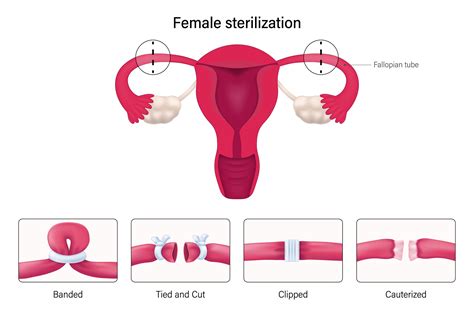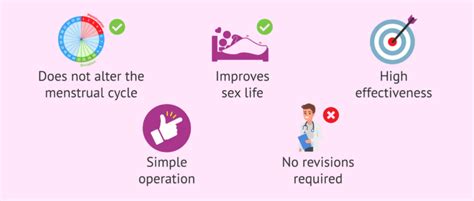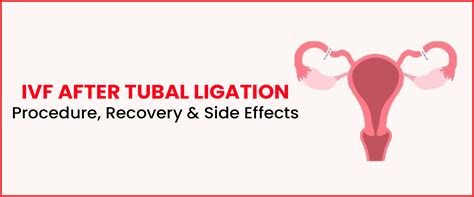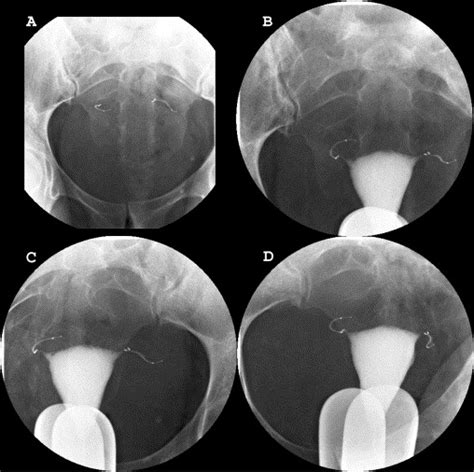Intro
Learn about the tubal ligation procedure, also known as getting your tubes tied, a permanent birth control method involving female sterilization and fallopian tube blocking for effective contraception.
The decision to undergo a permanent birth control method is a significant one, and for many women, getting their tubes tied, also known as tubal ligation, is a viable option. This surgical procedure is a popular choice for those who have completed their families or are certain they do not want to have any more children. With its high success rate and relatively low risk of complications, tubal ligation has become a common procedure in the field of reproductive health. As we delve into the world of tubal ligation, it's essential to understand the importance of this procedure and how it can impact a woman's life.
Tubal ligation is a surgical procedure that involves cutting or blocking the fallopian tubes to prevent pregnancy. The fallopian tubes are the pathways through which the egg travels from the ovary to the uterus, and by disrupting this pathway, pregnancy can be prevented. This procedure is typically performed under general anesthesia, and the surgeon will make a small incision in the abdomen to access the fallopian tubes. The tubes are then cut, tied, or blocked using a variety of methods, including clips, rings, or cauterization.
The benefits of tubal ligation are numerous, and for many women, it provides a sense of security and freedom from the worry of unwanted pregnancy. With a success rate of over 99%, tubal ligation is a highly effective method of birth control. Additionally, the procedure is relatively quick, taking only about 30 minutes to an hour to complete, and most women can return to their normal activities within a few days. However, it's crucial to note that tubal ligation is a permanent form of birth control, and it's essential to be certain about the decision before undergoing the procedure.
What is Tubal Ligation?

Types of Tubal Ligation
There are several types of tubal ligation procedures, including: * Clip method: This involves placing a small clip on the fallopian tube to block the pathway. * Ring method: This involves placing a small ring around the fallopian tube to block the pathway. * Cauterization method: This involves using heat to damage the fallopian tube and prevent pregnancy. * Cutting and tying method: This involves cutting the fallopian tube and tying it off to prevent pregnancy.Benefits of Tubal Ligation

Risks and Complications
While tubal ligation is generally a safe procedure, there are some risks and complications to be aware of. These include: * Infection: As with any surgical procedure, there is a risk of infection with tubal ligation. * Bleeding: There is a risk of bleeding during or after the procedure. * Damage to surrounding organs: There is a risk of damage to surrounding organs, such as the bowel or bladder. * Ectopic pregnancy: There is a small risk of ectopic pregnancy, which occurs when the fertilized egg implants outside the uterus.Preparation for Tubal Ligation

What to Expect During the Procedure
During the procedure, you can expect: * To be given general anesthesia: This will help you relax and prevent pain during the procedure. * To have a small incision made: The surgeon will make a small incision in the abdomen to access the fallopian tubes. * To have the fallopian tubes cut or blocked: The surgeon will use one of the methods mentioned earlier to cut or block the fallopian tubes.Recovery After Tubal Ligation

Follow-Up Care
After the procedure, it's essential to follow up with your doctor to ensure you're healing properly. Your doctor may schedule a series of follow-up appointments to: * Check for infection: Your doctor will check for signs of infection, such as redness, swelling, or discharge. * Check for bleeding: Your doctor will check for signs of bleeding or spotting. * Discuss birth control options: Your doctor will discuss birth control options with you, as you will no longer be able to get pregnant.Alternatives to Tubal Ligation

Conclusion and Next Steps
In conclusion, tubal ligation is a highly effective method of birth control that can provide a sense of security and freedom from the worry of unwanted pregnancy. While it's a permanent solution, it's essential to be certain about the decision before undergoing the procedure. If you're considering tubal ligation, it's crucial to consult with a doctor to discuss the procedure and determine if it's right for you.What is the success rate of tubal ligation?
+The success rate of tubal ligation is over 99%, making it a highly effective method of birth control.
What are the risks and complications of tubal ligation?
+The risks and complications of tubal ligation include infection, bleeding, damage to surrounding organs, and ectopic pregnancy.
How long does it take to recover from tubal ligation?
+Recovery from tubal ligation is typically quick, and most women can return to their normal activities within a few days.
We hope this article has provided you with a comprehensive understanding of tubal ligation and its benefits. If you have any further questions or concerns, please don't hesitate to reach out to us. Share this article with your friends and family to help spread awareness about this important topic. Take the first step towards taking control of your reproductive health and schedule a consultation with your doctor today.
